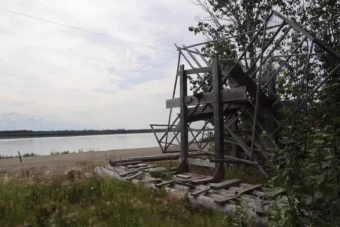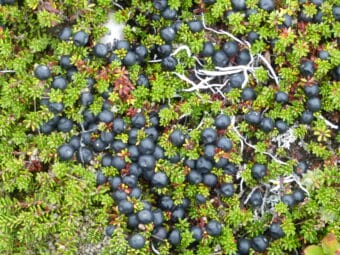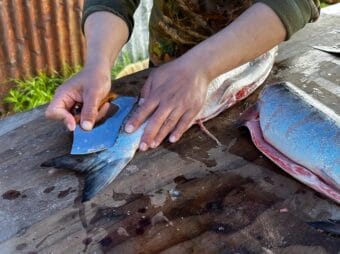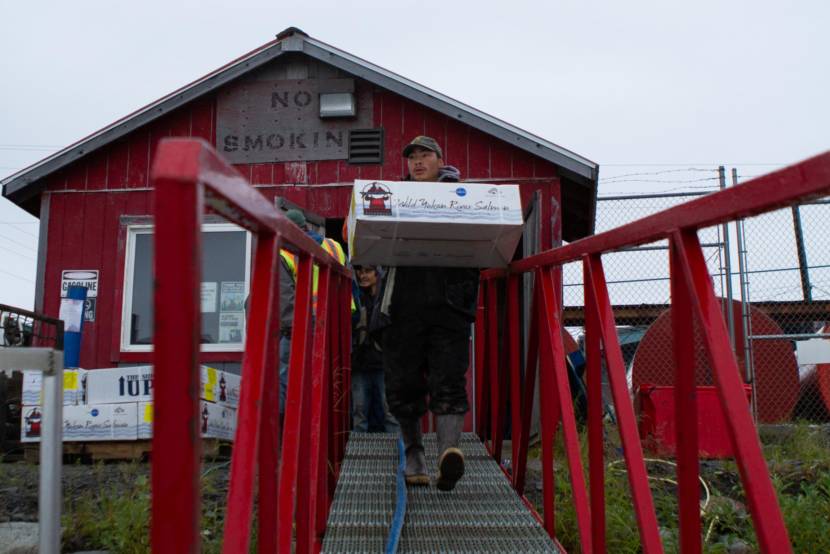
For eight years, Tanya Ives has been traveling up from Washington each summer to work at the Yukon River’s only fish processing plant: Kwik’Pak Fisheries. The plant sits outside of Emmonak, at the river’s mouth. Normally at this time of year, Ives would be packing up chum salmon harvested by commercial fishermen along the Yukon River to sell around the world. But this summer, she’s doing the opposite.
Ives is packing up salmon, caught hundreds of miles away, to send to Yukon River villages. She wears a red sweatshirt and gloves to keep warm while working with the frozen fish.
The Yukon River has seen its worst summer chum salmon run on record, and its third-worst chinook run. The commercial fishery is closed, and Kwik’Pak can’t sell salmon. Subsistence fishing for chum and chinook is also closed, and many people along the river have not had a taste of the fish this season.
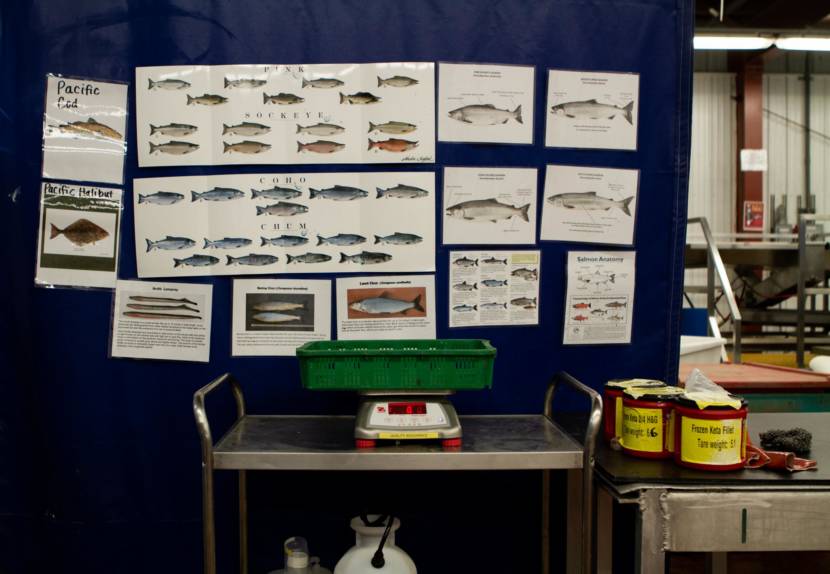
Meanwhile, on the southern end of the peninsula, Bristol Bay has been enjoying its best salmon run on record. To share the bounty, processors there donated 22,000 pounds of chinook and chum salmon to Yukon River villages. The Bristol Bay processors sent some of that salmon to Kwik’Pak to distribute to lower river communities.
Inside the Kwik’Pak plant, workers divide about 12,000 pounds of salmon into boxes. Ives gives instructions for how to label them.
“You’re going to write the number of fish and the pounds on this label, and then you’re going to put this donation label on the right top corner,” Ives says.
The fish are whole and frozen, so villagers can use them how they wish. Kwik’Pak is splitting the fish between 10 Lower Yukon River villages: Emmonak, Alakanuk, Nunam Iqua, Kotlik, Pilot Station, St. Mary’s, Marshall, Russian Mission and Pitkas Point.
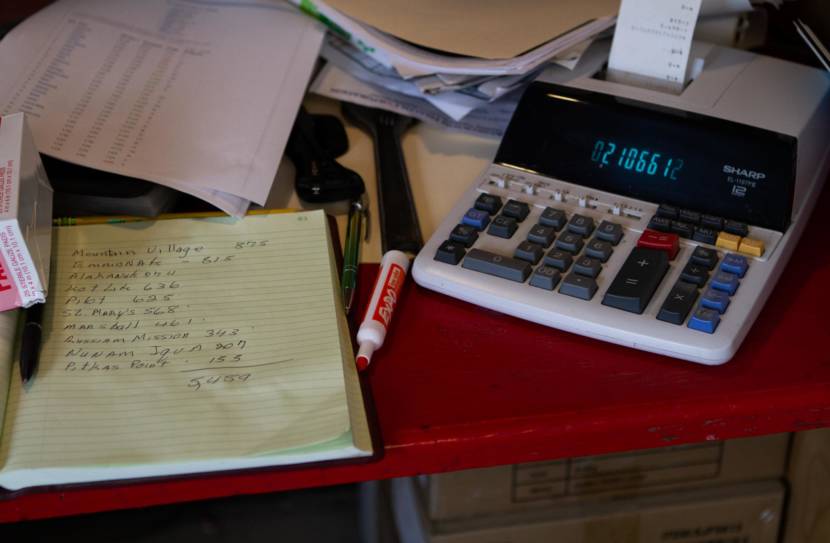
Dividing the salmon by village population, regional tribal nonprofits determined how many fish would go to each village. Tanana Chiefs Conference directed distributions upriver, and the Association of Village Council Presidents directed distributions along the lower river.
Kwik’Pak boated the salmon from community to community. Weighed down by thousands of pounds of frozen fish, a tender boat slowly motored up the cold, rainy Yukon. At the helm stood captain Daren Jennings, bundled up in a Rick and Morty sweatshirt with thick layers of raingear on top. As the skiff wound further upriver, willows more densely crowded the banks. Then spruce forests appeared.
According to local Elders, the area used to be pure tundra. The flora is changing, and sandbars claim more territory each year. They’re getting harder to avoid, even for someone who knows the river as well as Jennings.
Delivering salmon to the villages is new to him. In previous years he’d be doing the opposite: picking up commercial fishermen’s fresh catches and taking them back to Kwik’Pak to be processed. With the commercial fishery closed, he’s one of the few dozen employees that Kwik’pak has been able to hire back this year.
“Usually we’d be running way more and had way more people here, but since there’s no fishing you can only have so many workers that are doing so many things,” Jennings said.

The boat makes a gentle left turn onto the Andreafsky River. The river, fed by the Kusilvak Mountains, runs cold and black, a stark contrast to the muddy lower Yukon. The tender docks in St. Mary’s. Workers from the Algaaciq and Andreafsky tribes meet the tender at the bank.
“I’m droppin’ off big boxes of fish,” Jennings says, while calling the tribes to announce his arrival.
The tribal workers meet him at the shore. They load the fish into their pickups and drive them to households, until late evening. Bay Johnson from St. Mary’s is grateful to have at least a bit of fish.
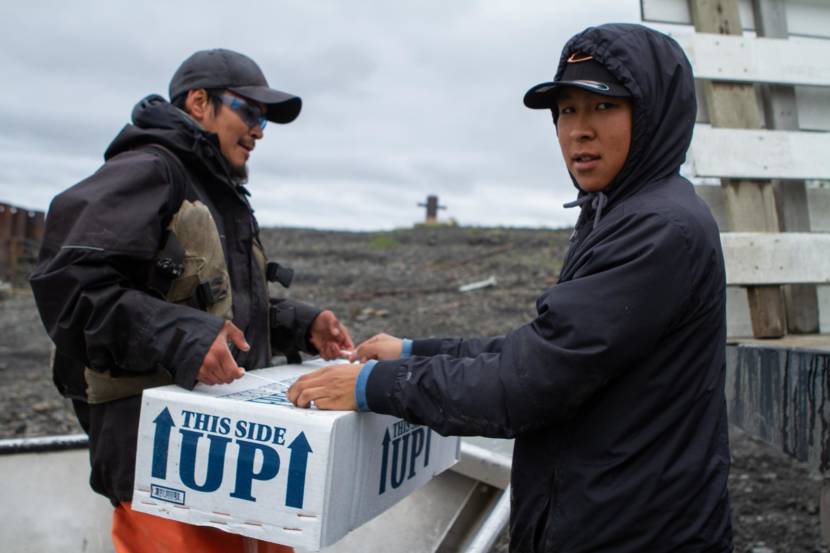
“We got two, and we were so happy for them,” she said. “Right now I have them thawing out so I can can them. They can last longer throughout the winter for us.”
But she said that the fish isn’t enough food for her family for the months ahead. With little opportunity for subsistence salmon fishing, her grocery bill has gone up. Her husband, Walky, said that they’ll have to try for other species of fish to get them through the winter.
A spokesperson for Gov. Dunleavy’s office also said that the Alaska Department of Fish and Game has purchased an additional 25,000 pounds of fish. Half of that arrived in Emmonak on Aug. 10 for distribution to Yukon-Kuskokwim Delta communities.

